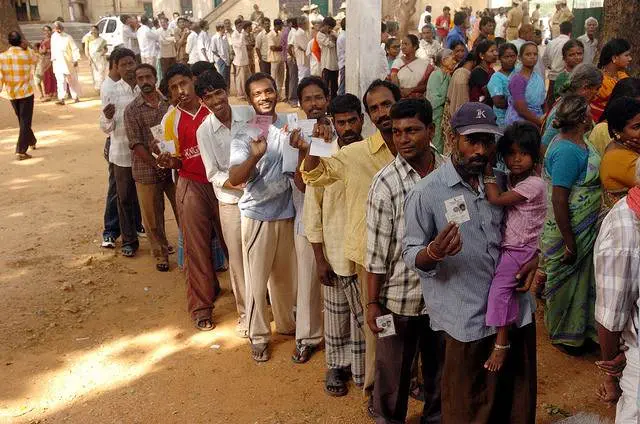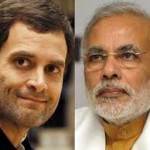 I came across this article – (see link below) which echoes a shared feeling that Modi will have difficulty translating his successes at a state level into a national one.
I came across this article – (see link below) which echoes a shared feeling that Modi will have difficulty translating his successes at a state level into a national one.
Of course he will!
Analysts and even sceptics know that it is expected for anyone coming from outside the realm of Delhi based politics. Three months is hardly a time to see any change. It takes several years for reforms to be introduced and see its effects, no matter who: Modi or Abe.
Someone has to talk about a change, even if it means an election ploy to come to power. Is there an alternative?
Modi’s independence speech has been dissected by many. I feel there is some substance in what he said.
The first is women’s security. This is a growing concern and he rightly addressed the imbalance in genders and social preferences, could he have done any better on this near impossible front?
Next he spoke of parallel governments in the capital, isn’t this absolutely true. He deserves to be lauded for speaking this out and am sure he will do something about it. The Planning Commission being the first to be chopped.
( TN Sheshan wrote in his book that a Planning Commission posting is generally considered being sent to a burial ground of bureaucrats. He himself fought his way out to the Election Commission, which was also a burial ground of sorts. His dynamism changed it to what it is today).
Likewise a dynamic leader like Modi will bring forth a change within a timeframe that can not be dictated by public opinion, at least during the term of office. Scrapping the Planning Commission could be considered his first act of deliverance.
Modi announced the introduction of a Prime Minister’s scheme ‘Jan Dhan’ ( Pradhan Mantri Jan Dhan Yojana) which is essentially a ‘transfer’ (in economic terms) of subsidies directly to the farmer. While he did not elaborate, it does have a relevance to Modi’s stance at the WTO and extending rural life insurance.
(There is a disconnect between the thinking of the OECD countries and a country like India and perhaps Thailand.
Agri produce is bought at above market price as part of the government’s subsidy to farmers and developing a national reserve stock. The beneficiaries are the middlemen, because we don’t have the government buying directly from small farmers whose market is the ‘haat’ or ‘santhe’. The major physical stock has to be sold at the ‘Mandi’. Mandi merchants and ‘Adathis’ are wealthy people in India, they could also be landowners and many of them are MP’s MLA’s and MLCs etc.Subsidy is the reason why the price of tomatoes and onions shoot up. The common man gets nothing.
India should be subsidising the man at the plough through ‘transfer’ without affecting market prices.
While I stand for not diluting the customs regulations for agri and food products, as this will lead to dumping. I wish they change the system of subsidy and not pull wool over the eyes of the citizens.
India is the or one of the largest producer of Rice, Bananas, and so many other food products. It has an excellent distribution system, a grass root one too, yet prices go up because of bad fiscal policy).
The Jan Dhan Yojna, appears to correct this. Will have to wait to see it’s success.
Modi mentioned about making India a manufacturing hub. This translates to more jobs, subsidy of the small scale industry and beating the near impossible competition from China. I think he alluded to a quality angle when he said that we should proudly proclaim ‘Made in India’. However, the possibility of India becoming a regional manufacturing hub is very much possible. Most foreign analysts fail to see that a country like India is a market to itself and can sustain itself without getting goods or foods made overseas. For this reason we often see the refrain ‘that it is hard to do business with India/Asia’. When it comes to goods, the Indian market prefers something that is durable, cheap and lasting. Quite contrary to a Western philosophy of planned obsolescence. Alluding to manufacturing is giving it a preference over the IT sector, which has boosted India’s exports and image around the world, but runs the risk of being a bubble that can burst anytime, dependent on the whims of foreign legislation.
The BJP or any party in power functions conveniently independent of its ideology. So while the ideology became the election manifesto of the party, it doesn’t really translate to the day to day functioning of the government when in power. Such is the nature of Indian politics and possibly a universal truth! Therefore, it is very hard to close the gap between promises, actions and results.
About the insurance industry, currently there is a cap of 26% or so for foreign investors. Insurance is a complex industry in India and especially in the life insurance area, it is seen as a vehicle for savings and retirement unlike in Western countries where there is no accumulated or tax benefits accrued on premiums. In short, meddling with this can affect the vote banks. Many schemes are linked to instruments that could well be government bonds. Insurance is a competitive and complex field and Modi will not be in a hurry to announce something that will turn the tide for him. Jan Dhan scheme has a insurance cover attached to it. The insurance sector has been opened to international players, albeit 26%, but there are several ways they can come in through the public-private partnerships that exist. International players can partner with the private sector elements in the Insurance industry.
Its early days and in India miracles take sometime even for the Gods!
Check out this article:




India with 1.237 billion people has its own pace & dynamics. I presume, we are on the right track and are opening for business. The Global Community will have to wait, in any case what alternative(s) do they have?? They will come……